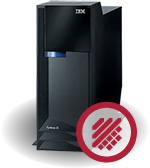 Everyone in the IBM i (AS/400, iSeries) world with responsibility for these large servers knows that IBM will soon announce the next release of the IBM i operating system, and that version V5R4 will go off of support a short time after that. While the date of the next release and the sunset date for V5R4 have not been announced, IBM has a fairly predictable pattern of new OS releases and support schedule. You can read Timothy Pickett Morgan’s thoughts in an article he wrote titled "The Carrot: i5/OS V5R4 Gets Execution Stay Until May."
Everyone in the IBM i (AS/400, iSeries) world with responsibility for these large servers knows that IBM will soon announce the next release of the IBM i operating system, and that version V5R4 will go off of support a short time after that. While the date of the next release and the sunset date for V5R4 have not been announced, IBM has a fairly predictable pattern of new OS releases and support schedule. You can read Timothy Pickett Morgan’s thoughts in an article he wrote titled "The Carrot: i5/OS V5R4 Gets Execution Stay Until May."
So right now IBM shops running V5R4 are busy planning their upgrades. Many are planning to move just one version ahead to V6R1.
News Update! IBM just announce the support end date for V5R4. It’s September 30, 2013. You can read it here.
Upgrading your IBM i (AS/400) to V6R1 instead of V7R1 is a bad idea. Here’s why:
In V7R1 IBM provided a new automatic encryption facility in DB2/400 called FIELDPROC (That’s short for “Field Procedure”). This new facility gives IBM i customers their first shot at making encryption of sensitive data really easy to do. With the right software support you can implement column level encryption without any programming. The earlier trigger and SQL View options were very unsatisfactory, and the new FIELDPROC is strategically important for customers who need to protect sensitive data.
Another key feature in V7R1 is a new version of the Secure Shell sFTP application. This is rapidly becoming the file transfer method of choice. And IBM provides version 4.7 in V7R1. If you are doing a substantial amount of file transfers with sFTP, or you plan to do so, you will want all of the latest security patches in OpenSSH.
I know that an operating system upgrade is a lot of work, and that’s why IBM i shops are reluctant to do it very often. And when they do an upgrade, there stay there as long as possible. But FIELDPROC is only available in V7R1, it is not patched back to V6R1. And the latest version of OpenSSH is provided in the V7R1 distribution.
So I think you should skip V6R1 and go directly to V7R1. You won’t want to be locked in to a version of the OS without important security features. And the jump from V5R4 directly to V7R1 is a fully supported path by IBM. I hope I’ve convinced you to consider this important security option as you look at your OS upgrades this year.
Download our podcast on "The Benefits of FIELDPROC Encryption" to learn more about FIELDPROC capabilities and the benefits of transparent encryption. Additionally, we have a podcast titled "FIELDPROC Performance - Speed Matters" for those who are wondering how it will impact their systems.
Patrick
Are you going to COMMON in Anaheim? I will be doing four sessions on security on the IBM i. Be sure to stop by the booth and say Hello!




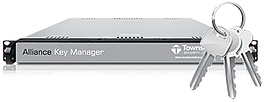 As a company that provides NIST-certified encryption and FIPS 140-2 encryption key management, we need to secure data on a number of different platforms. Lately we have been coming into several cases where a customer needs encryption and key management on both Microsoft SQL Server and Oracle databases. Below is an email exchange with a customer who came to us “looking for a product to store, generate and manage keys that we use to encrypt/decrypt credit card information inside both SQL Server and Oracle Databases on Windows and UNIX.” We hope this discussion helps with your encryption project.
As a company that provides NIST-certified encryption and FIPS 140-2 encryption key management, we need to secure data on a number of different platforms. Lately we have been coming into several cases where a customer needs encryption and key management on both Microsoft SQL Server and Oracle databases. Below is an email exchange with a customer who came to us “looking for a product to store, generate and manage keys that we use to encrypt/decrypt credit card information inside both SQL Server and Oracle Databases on Windows and UNIX.” We hope this discussion helps with your encryption project. Key Generation:
Key Generation:
 Many people we talk to are gambling with $7.2 million whether they realize it or not. This week we are at HIMSS12 in Las Vegas meeting members of the IT medical community – an appropriate venue for such high-stakes gambling. How are these people gambling with so much money? The average cost of a data breach is $214 per record, or $7.2 million for an organization. This figure is determined not only by direct costs of a data breach, such as notification and legal defense costs that impact the bottom line for companies, but also indirect costs like lost customer business due to abnormal churn.
Many people we talk to are gambling with $7.2 million whether they realize it or not. This week we are at HIMSS12 in Las Vegas meeting members of the IT medical community – an appropriate venue for such high-stakes gambling. How are these people gambling with so much money? The average cost of a data breach is $214 per record, or $7.2 million for an organization. This figure is determined not only by direct costs of a data breach, such as notification and legal defense costs that impact the bottom line for companies, but also indirect costs like lost customer business due to abnormal churn.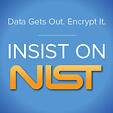 If you aren’t familiar with NIST and FIPS 140-2 certifications, the National Institute of Standards and Technology (NIST) provides them to encryption and key management solutions after they undergo a rigorous testing process. The testing is carried out by independent testing labs who then report the results directly to NIST for validation. Only the most dedicated security vendors are able to pass the tests and achieve NIST and FIPS 140-2 certifications. Not only are these certifications essential for meeting compliance regulations, but they provide you an ease of mind that a third-party has verified the integrity of the product.
If you aren’t familiar with NIST and FIPS 140-2 certifications, the National Institute of Standards and Technology (NIST) provides them to encryption and key management solutions after they undergo a rigorous testing process. The testing is carried out by independent testing labs who then report the results directly to NIST for validation. Only the most dedicated security vendors are able to pass the tests and achieve NIST and FIPS 140-2 certifications. Not only are these certifications essential for meeting compliance regulations, but they provide you an ease of mind that a third-party has verified the integrity of the product. The last few days has seen a number of new reports about a security vulnerability in RSA public/private keys in use on the Internet. The vulnerability has to do with duplicate keys, and not with any weakness in the cryptographic algorithm itself. But it is disturbing information because public/private key encryption is crucial to the security of web sites and a number of other secure applications and services.
The last few days has seen a number of new reports about a security vulnerability in RSA public/private keys in use on the Internet. The vulnerability has to do with duplicate keys, and not with any weakness in the cryptographic algorithm itself. But it is disturbing information because public/private key encryption is crucial to the security of web sites and a number of other secure applications and services.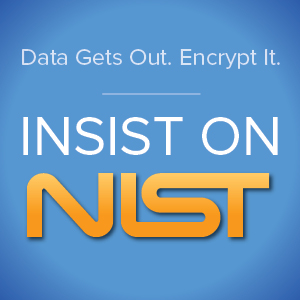 NIST also has a certification program for random number generators and vendors like us can submit our work to independent labs that perform NIST testing. All of our cryptographic solutions have been through this testing. It is also important to note that encryption key management systems that undergo FIPS 140-2 certification also go through full RNG testing. Our
NIST also has a certification program for random number generators and vendors like us can submit our work to independent labs that perform NIST testing. All of our cryptographic solutions have been through this testing. It is also important to note that encryption key management systems that undergo FIPS 140-2 certification also go through full RNG testing. Our 
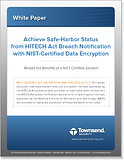



 In our final installment on system logging on the IBM i series, Patrick Townsend, Founder & CTO, discusses what to look for when selecting and deploying a logging solution. As we found out in
In our final installment on system logging on the IBM i series, Patrick Townsend, Founder & CTO, discusses what to look for when selecting and deploying a logging solution. As we found out in 
 System logging is also important for meeting compliance regulations too, right?
System logging is also important for meeting compliance regulations too, right? 
 As a company that works hard to protect your data, we get a lot of questions – from people wanting to know the ins and outs of our products to IT professionals who are new to the world of meeting compliance regulations. Luckily, our company has several experts to answer these questions. One topic that we often get questions regarding is system logging on the IBM i (AS/400). Logging on the IBM i is different than logging on other platforms. I recently sat down with Patrick Townsend, Founder & CEO, to pick his brain on what system logging is, and why it is so unique on the IBM i.
As a company that works hard to protect your data, we get a lot of questions – from people wanting to know the ins and outs of our products to IT professionals who are new to the world of meeting compliance regulations. Luckily, our company has several experts to answer these questions. One topic that we often get questions regarding is system logging on the IBM i (AS/400). Logging on the IBM i is different than logging on other platforms. I recently sat down with Patrick Townsend, Founder & CEO, to pick his brain on what system logging is, and why it is so unique on the IBM i.